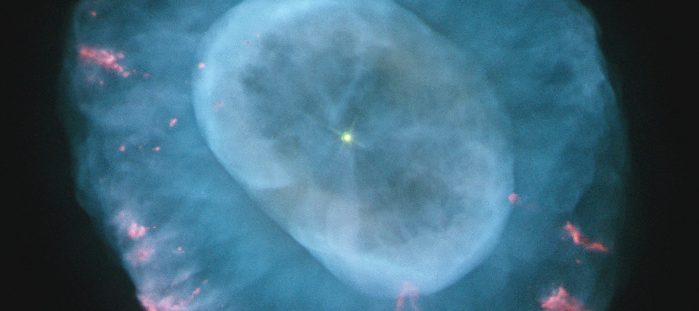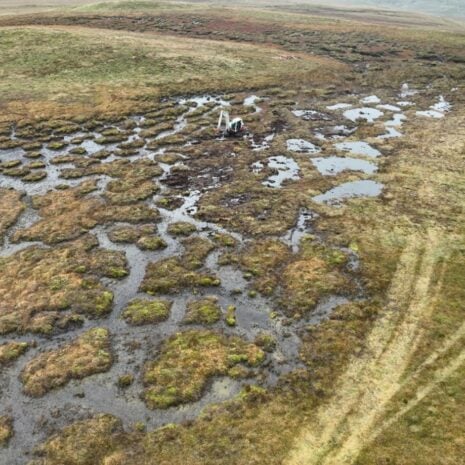Welcome to this month’s update to what’s in the night sky for September.
This is a great time of year to stargaze as you don’t have to wait until very late for true darkness to fall where you can study star clusters, nebulae and galaxies at their best.
Darkness falls at around 10.10pm at the beginning of the month and 8.50pm at the end.
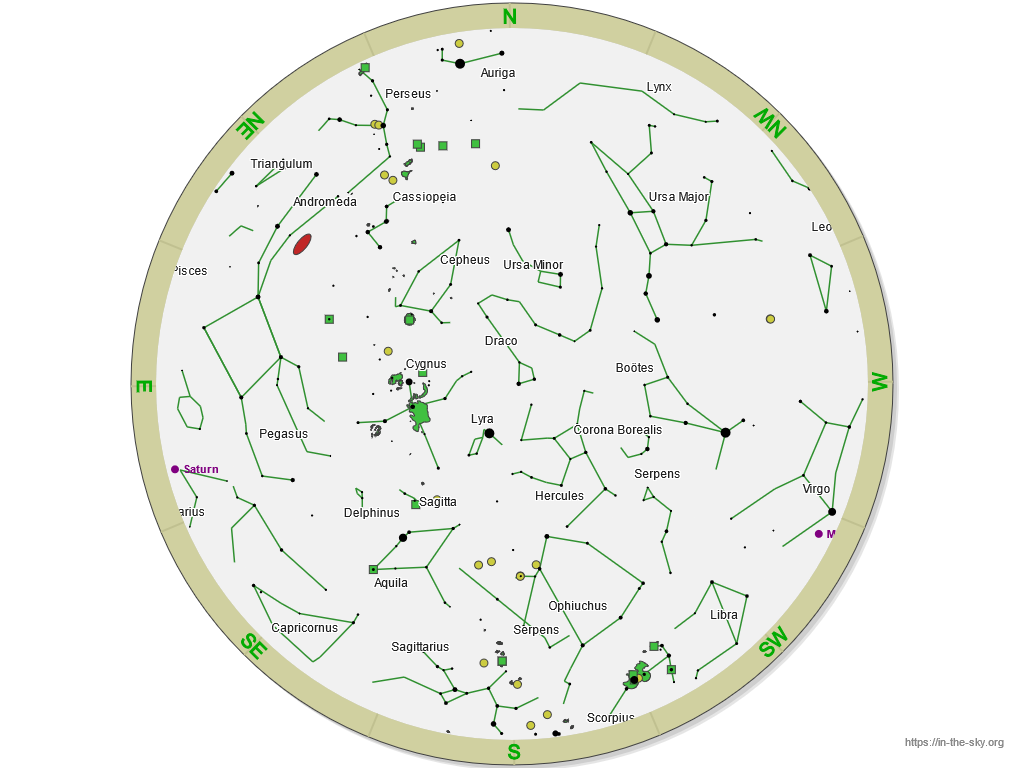
At 10pm, the constellations that are dominant in the southern night sky during September are Cygnus, which is well-placed, Lyra, Aquila, which lies at the eastern side of the Milky Way and Sagittarius and its famous teapot asterism, which lies low on the horizon.
Hercules and Ophiuchus marches westwards and Boötes with its bright star Arcturus begins to set.
The New Moon occurs on 3rd September and the Full Moon on 17th September.
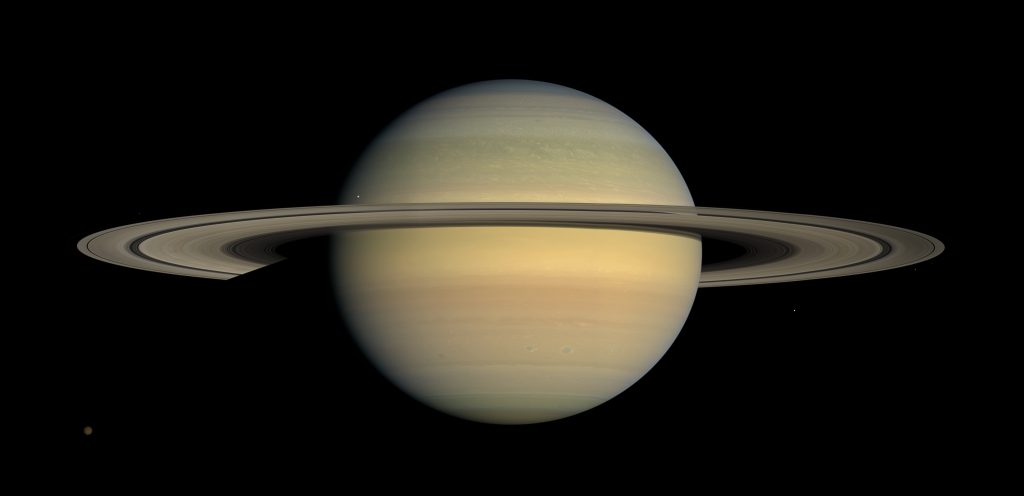
Planets
Saturn will be in opposition on 8th September, which means that if you draw an imaginary line from the Sun that runs through the Earth, Saturn is also on that line with the Earth in between. This happens about once a year as the planets orbit the Sun. Saturn is a great planet to observe during this time, as it appears at its brightest and largest.
By the end of September, Jupiter will be well placed in the night sky to study. Look for the Jovian Moons and opportunities to study the cloud bands on the surface of the planet. Take some time to observe, as there will be times when the atmosphere stills and you get a brief glimpse of whorls and the bands in great detail.
Fans of the ice giants Neptune and Uranus will get the opportunity to study them this month, as they will be also well-placed. Neptune will be at opposition on 21st September. They will appear like steady, nebulous dots of blue/green. Anyone with larger telescopes above 10 inches of aperture may be able to spot Triton, Neptune’s largest of its 16 moons.

Partial Lunar Eclipse
On 18th September there will be a partial lunar eclipse. The Moon will move into the penumbral shadow at around 1.41am – this is the outer shadow of the Earth as it gradually moves into a position where it is between the Moon and the Sun.
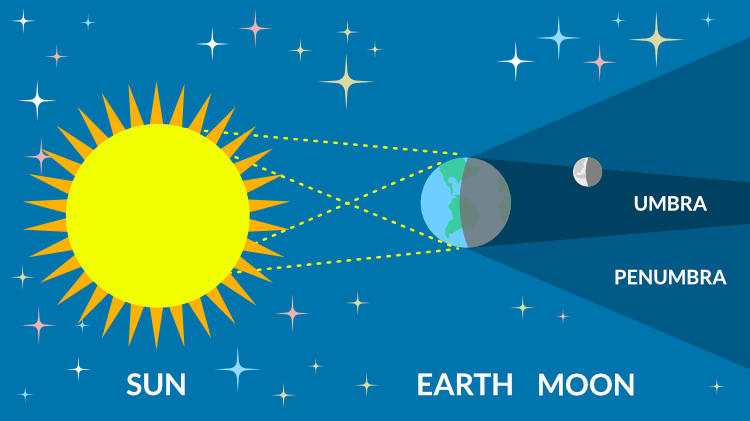
The Moon moves into the umbral shadow at around 3.13am, with the greatest point of the eclipse occurring at 3.44am. This will be visible – clear skies permitting! – as the umbral (inner shadow) is darker and the Moon will appear to have a bite taken out of it in the upper western limb. The Moon leaves the penumbral shadow at 4.16am and the penumbral at 5.47am.
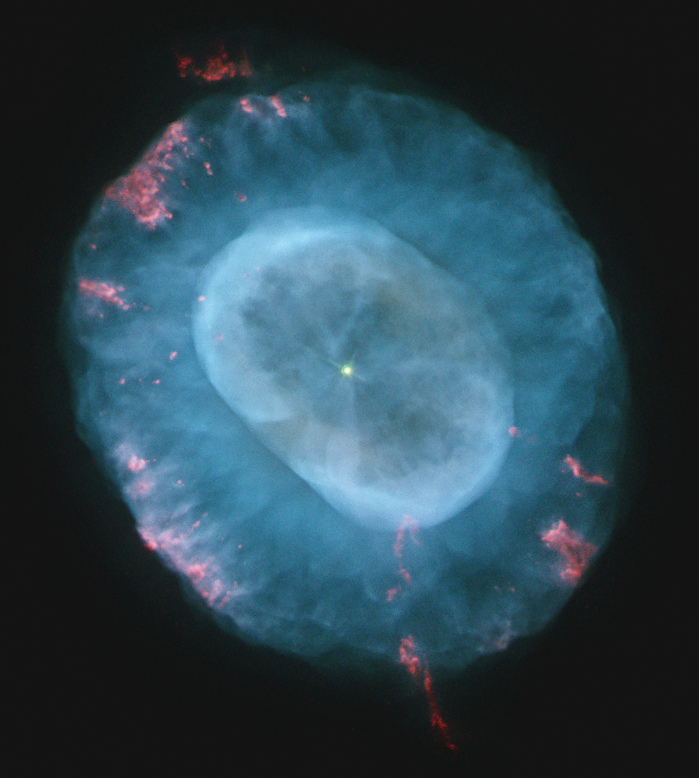
Blue Snowball Nebula
RA | 23h 27m 05s
Dec | +42° 40’ 14”
This month, we have set an interesting challenge for observers to find. NGC 7662 is more commonly known as the Blue Snowball Nebula.
Located around 2500 light years from Earth, this planetary nebula is caused by a dying star that doesn’t have the mass to explode as a supernova; instead it quietly sheds its outer layers as ionised gas, causing the visually appealing nebula that can often glow bright enough to be seen though telescopes. It glows blue as the gases mostly comprise oxygen. The sketch to the right shows what this nebula could look like though an 8 inch telescope in a very dark sky. The blue hue of this pretty nebula can be seen visually.
It is thought that our own Sun will also end its life as a planetary nebula, as opposed to a spectacular supernova, as is common with much larger stars.
Image credit: Michael Vlasov of www.deepskywatch.com.
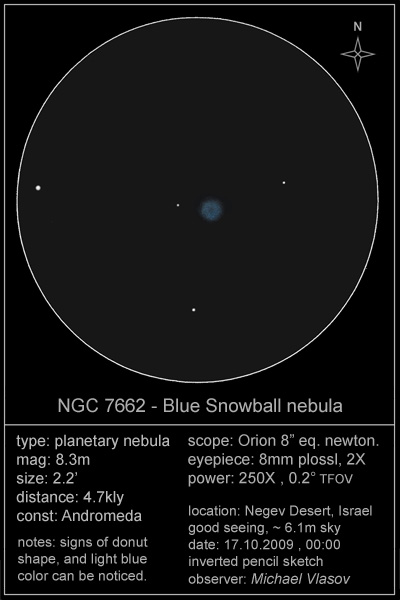
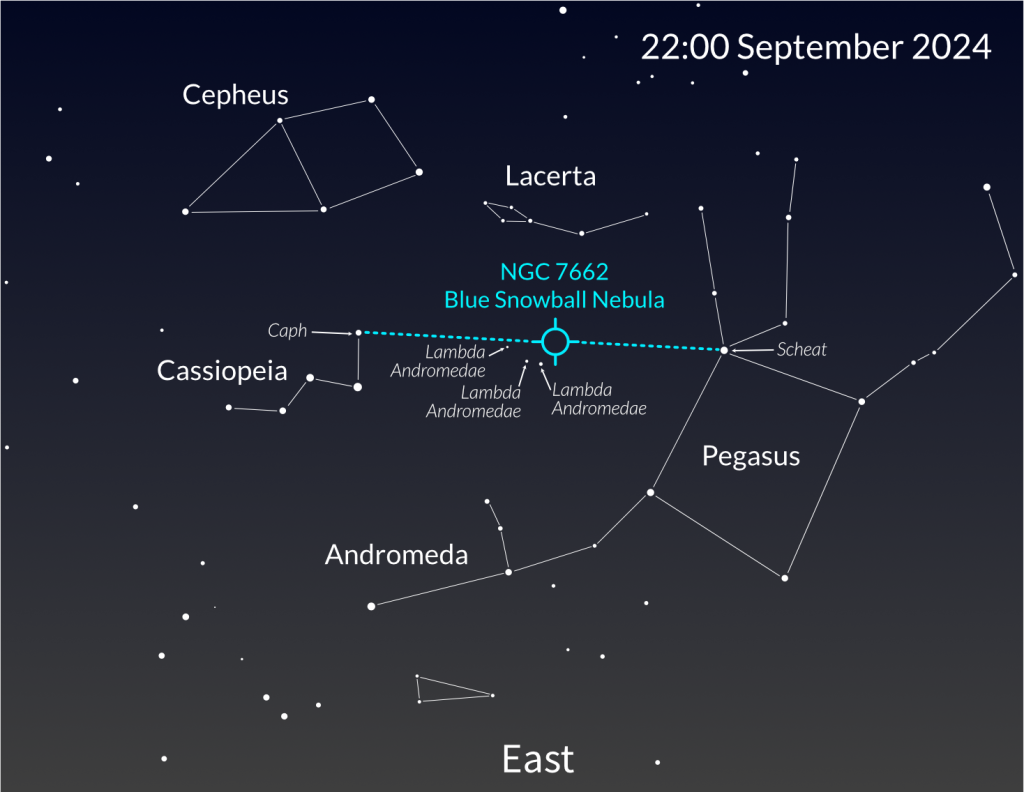
You can find this object by locating four constellations: Cassiopeia, Andromeda, Pegasus and Lacerta. Look for the star Caph in Cassiopeia and draw an imaginary line across to the star Scheat in the constellation of Pegasus – The Blue Snowball nebula lies almost in the centre of the line. If you use your finder scope to locate a mini three-star asterism: Lambda Andromedae, Kappa Andromedae and Iota Andromedae, the nebula lies near these stars but once you have used your finder scope to see these stars, you will need to look through your eyepiece to see the nebula pop into view.
